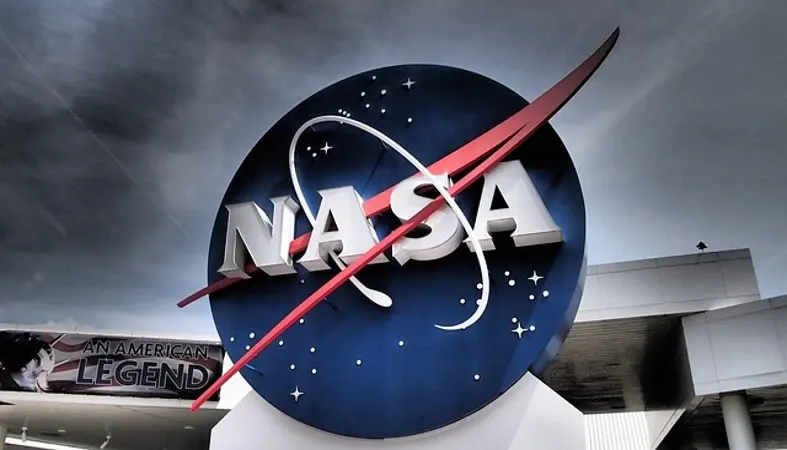
National Aeronautics and Space Administration (NASA)
Have you ever dreamed of venturing into the vastness of space, discovering distant galaxies, and unraveling the mysteries of the universe? Look no further than NASA, the pinnacle of human space exploration and scientific discovery. NASA has captured the world's imagination with its awe-inspiring achievements and groundbreaking discoveries. From its humble beginnings to its latest interplanetary missions, NASA continues to push the boundaries of human knowledge and exploration.
In the upcoming sections of this blog post, we will explore the rich tapestry of NASA's history, delve into its awe-inspiring space flight programs, marvel at its scientific contributions, and take a closer look at its latest projects. Whether you are a space enthusiast, a student with dreams of becoming an astronaut, or simply someone who marvels at the wonders of the cosmos, this guide will provide you with a wealth of information about NASA and its contributions to science, space exploration, and the betterment of humanity.
Before discussing the details, let’s take an overview of NASA:
- When was NASA founded? The journey of NASA began on July 29, 1958, when President Dwight D. Eisenhower signed the National Aeronautics and Space Act into law. This historic moment marked the official founding of NASA, leading the United States into a new era of space exploration and scientific advancements.
- NASA stands for the National Aeronautics and Space Administration, a name that encapsulates its primary areas of focus: aeronautics, the study of flight within the Earth's atmosphere, and space, the exploration and understanding of celestial bodies beyond our planet.
- Where is NASA located? NASA's headquarters is located in Washington, D.C., the capital of the United States. However, the agency's operations extend far beyond its headquarters, with numerous research centers, testing facilities, and spaceports spread across the country.
- Who founded NASA? While NASA's establishment was a result of collective efforts, its founding can be attributed to key figures such as President Eisenhower, who recognized the importance of space exploration, and James E. Webb, who played a pivotal role in shaping NASA as its second Administrator.
So, get ready to lift off into a world where the sky is no longer the limit, and the mysteries of the universe beckon us forward.
NASA History
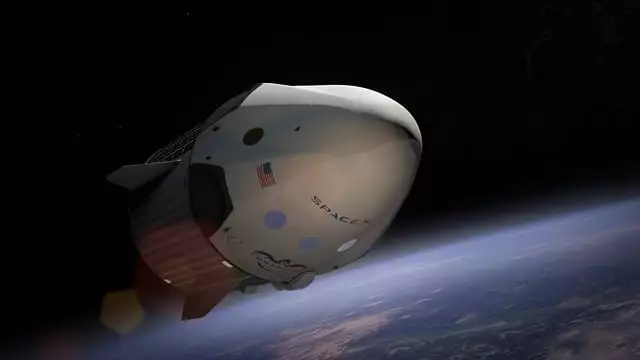
The history of NASA is a fascinating tale of scientific ambition, innovation, and the pursuit of human exploration beyond Earth's boundaries. It all began in the late 1950s with the foundation of the National Aeronautics and Space Administration. The agency's origins trace back to the United States' aspirations to lead in technology and research. In the late 1940s, the U.S. Department of Defense embarked on endeavors in research, rocketry, and atmospheric sciences.
The pivotal moment in NASA history timeline came during the International Geophysical Year, spanning from July 1957 to December 1958, when the Soviet Union surprised the world by launching the first artificial satellite, Sputnik 1. This event sparked a sense of urgency in the United States to establish its own space program. On January 31, 1958, the U.S. successfully launched Explorer 1, its first Earth satellite. However, the Soviet Union's early lead ignited the "Space Race," intensifying the American determination to excel in aerospace programs.
On July 29, 1958, President Dwight D. Eisenhower signed the National Aeronautics and Space Act into law, officially establishing NASA 1958. The agency inherited the expertise and resources of the National Advisory Committee for Aeronautics, including research laboratories and personnel. Notably, NASA assimilated key organizations such as the space science group of the Naval Research Laboratory, the Army's Jet Propulsion Laboratory, and the Army Ballistic Missile Agency.
In the ensuing years, NASA embarked on groundbreaking initiatives. Project Mercury aimed to determine if humans could survive in space, while Project Gemini practiced essential space operations. The crowning achievement of the history of NASA came with Project Apollo, as the United States successfully landed astronauts on the moon in July 1969, marking a monumental milestone in human history.
Beyond landing the first man in space, NASA's endeavors continued with the Space Shuttle Program, which operated from 1981 to 2011. During this period, remarkable scientific achievements included the construction of the International Space Station (ISS) and the launch and repair of the Hubble Space Telescope. NASA's contributions encompassed biology, Earth and space science, human research, physical science, and technology development.
Today, NASA remains at the forefront of space exploration. With 10 field centers, seven test and research facilities, and headquarters in Washington, D.C., NASA continues to push boundaries, employing thousands of passionate individuals dedicated to expanding our knowledge of the universe and making new discoveries for the benefit of humanity.
Manned Spaceflight Programs
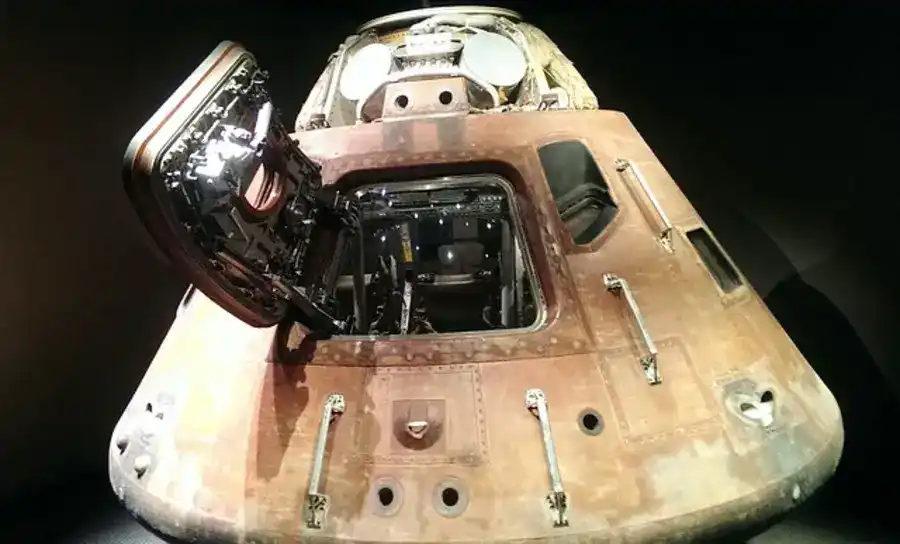
The intense rivalry known as the Cold War between the United States and the former Soviet Union ignited fierce competition in space exploration, leading to the remarkable era of the space race. On April 12, 1961, the Soviets achieved a momentous feat by sending the first person into space. In response to this significant milestone, President John F. Kennedy issued a bold challenge to the nation: landing the first human-piloted space flight on the Moon and returning him safely to Earth. Over the course of eight years, a remarkable journey culminated in the successful landing of American manned spaceflight on the lunar surface. During these 8 years, NASA conducted the following 3 human space flight programs:
-
Project Mercury
Project Mercury, the first US manned space flight, conducted a total of 25 flights between 1961 and 1963, with six of them carrying astronauts. The primary objectives of the program were to orbit a human spacecraft around the Earth, assess human capabilities in space, and ensure the safe return of both the astronauts and the spacecraft. More than two million individuals from government agencies and the aerospace industry joined forces, combining their skills, initiative, and experience to make this ambitious project a reality. Project Mercury successfully demonstrated that humans could function effectively during weightless flight for durations of up to 34 hours.
-
The Gemini Program
The Gemini program, following the footsteps of Project Mercury, focused on testing equipment and mission procedures while providing training for astronauts and ground crews in preparation for future Apollo missions to the Moon. The program's primary goals were to assess astronauts' ability to endure extended-duration flights (up to 14 days), refine techniques for spacecraft rendezvous and docking in Earth's orbit, perfect re-entry and landing methods, and gain deeper insights into the effects of prolonged space travel on astronauts. The name "Gemini" was chosen for this program as it means "twins" in Latin, symbolizing the two-person capsule used in the NASA manned missions.
-
The Apollo Program
Exactly eight years, one month, and 26 days after President Kennedy's challenge, the Apollo program accomplished the extraordinary feat of landing the first manned spaceflight on the lunar surface and safely returning them to Earth. In addition to achieving this monumental milestone, the Apollo program advanced technological capabilities to meet other national space interests, conducted significant scientific exploration on the Moon, and developed the necessary infrastructure and expertise for future human activities in the lunar environment.
Tragically, the Apollo program faced a devastating setback during its early stages. On January 27, 1967, a fire engulfed the Apollo 1 command module during a preflight test at the Cape Kennedy launch pad, resulting in the loss of the lives of astronauts Ed White, Gus Grissom, and Roger Chaffee. However, NASA persevered and underwent significant changes to enhance safety protocols and ensure the success of future missions.
NASA Contributions to Scientific Research

NASA is renowned for its pioneering efforts in space exploration, but its contributions to scientific research extend far beyond the confines of our planet. NASA's endeavors have revolutionized our understanding of Earth, the solar system, and the broader universe. Through its missions, satellites, and cutting-edge technologies, NASA has significantly advanced various scientific disciplines and made groundbreaking discoveries.
-
Earth Science
NASA scientists have played a vital role in advancing Earth science through satellite missions dedicated to studying our home planet. Satellites like the Aqua, Terra, and Suomi NPP have provided scientists with a wealth of data on Earth's atmosphere, land surfaces, oceans, and climate patterns. These missions have helped researchers monitor changes in sea levels, measure greenhouse gas emissions, track hurricanes, and study the effects of climate change.
-
Space Science
NASA's primary mission has always been space exploration, and its contributions to Space Science are unparalleled. From the Apollo moon landings to the ongoing missions to Mars, NASA has pushed the boundaries of human exploration and expanded our knowledge of the cosmos. The Mars rovers, such as Opportunity, Spirit, and Curiosity, have uncovered evidence of water on the red planet and provided valuable insights into its geological history. Moreover, NASA's recent Perseverance rover has successfully collected samples from Mars for future analysis, which could potentially provide clues about the existence of ancient life on the planet.
-
Astrophysics
NASA's astrophysics missions have transformed our understanding of the universe and its celestial bodies. The Hubble Space Telescope, launched in 1990, has captured breathtaking images of distant stars, galaxies, and nebulae, revolutionizing our perception of the cosmos. Hubble's observations have helped determine the age of the universe, unravel the mysteries of black holes, and study the formation of stars and planetary systems. Additionally, NASA's Kepler and TESS missions have identified thousands of exoplanets, including many that reside within their star's habitable zone, offering tantalizing prospects for the search for extraterrestrial life.
-
Technology and Innovation
NASA's pursuit of scientific research has driven remarkable technological advancements. From developing lightweight materials for spacecraft to creating sophisticated imaging systems, NASA space technologies have consistently pushed the boundaries of engineering. Innovations like scratch-resistant lenses, memory foam, and water filtration systems have found applications beyond NASA space science exploration, benefiting various industries and improving everyday life. Furthermore, NASA research in robotics and autonomous systems has paved the way for robotic missions to explore distant and inhospitable environments, reducing risks for human astronauts.
-
Collaboration and Knowledge Sharing
NASA actively collaborates with international partners, academia, and other research institutions to foster collaboration and advance scientific knowledge. Through initiatives like the International Space Station (ISS), NASA has facilitated research across various disciplines, including NASA meteorology, solar energy NASA, NASA physics, NASA geology, astrophysics, and NASA medical research. The data and findings from these collaborative efforts contribute to the global scientific community and enable interdisciplinary research that extends beyond the scope of space exploration.
NASA Achievements
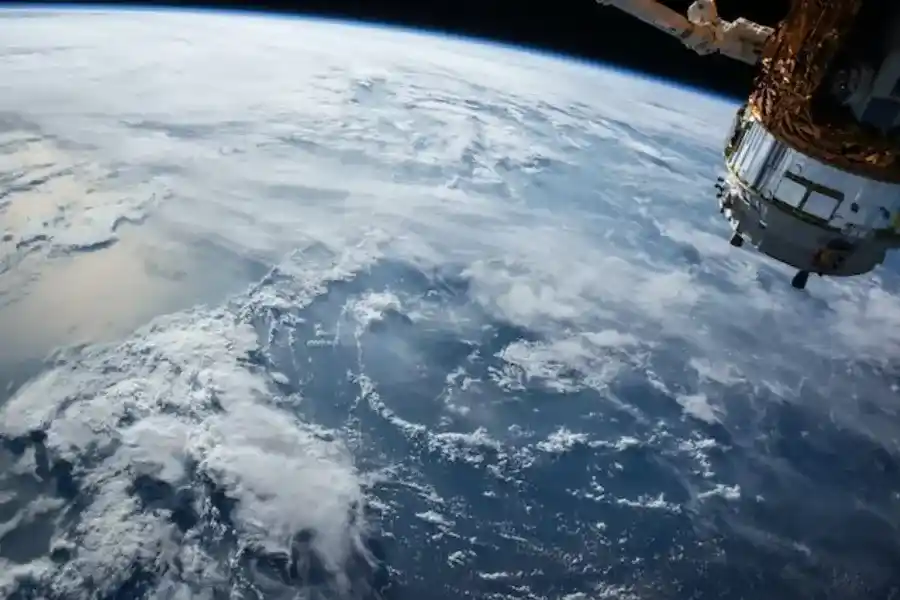
NASA (National Aeronautics and Space Administration) has achieved numerous milestones in scientific research, making significant contributions to various fields. From pioneering the first man in space program to other most important events in space exploration, NASA has played a vital role in advancing our understanding of the universe.
-
Aeronautics Research
NASA's aeronautics research has been instrumental in advancing aviation technology. Through wind tunnels, flight testing, and computer simulations, NASA has made significant strides in aerodynamics and wind shear research. The X-15 program, which involved rocket-powered planes reaching the edge of space and reentering Earth, provided valuable insights for the design of the Space Shuttle. Additionally, NASA's work on digital fly-by-wire systems revolutionized electronic flying and influenced aircraft design.
-
Space Applications and Earth Science
NASA has also pioneered the development of space applications satellites, leading to the creation of advanced communications satellites like Telstar, Echo, and Syncom. These satellites have transformed global communication systems. In the realm of Earth science, NASA's missions, such as Landsat and Earth Observing System, have provided crucial data and insights into Earth's climate patterns, environment, and natural resources. NASA's contributions to space exploration history have significantly impacted our understanding of the planet and influenced environmental policies.
-
Hubble Telescope and Space Exploration
NASA's Hubble Space Telescope stands as a testament to its accomplishments in space exploration. Named after astronomer Edwin Powell Hubble, this space-based observatory has revolutionized our understanding of the universe. The Hubble Telescope has captured breathtaking images, uncovered the age of the universe, studied distant galaxies, and contributed to key astronomical discoveries. It continues to provide invaluable data for astronomers and scientists worldwide.
-
Educational Initiatives and Future Prospects
NASA actively engages in educational initiatives to inspire and prepare future scientists, engineers, and astronauts. The agency provides training and resources for teachers to enhance science, engineering, technology, and mathematics education. NASA's programs encourage students worldwide to take an interest in space exploration and scientific research, igniting their passion for learning and discovery. As NASA continues to explore the solar system and beyond, the next generation of explorers will have the opportunity to contribute to the agency's ongoing scientific endeavors.
Latest NASA Projects
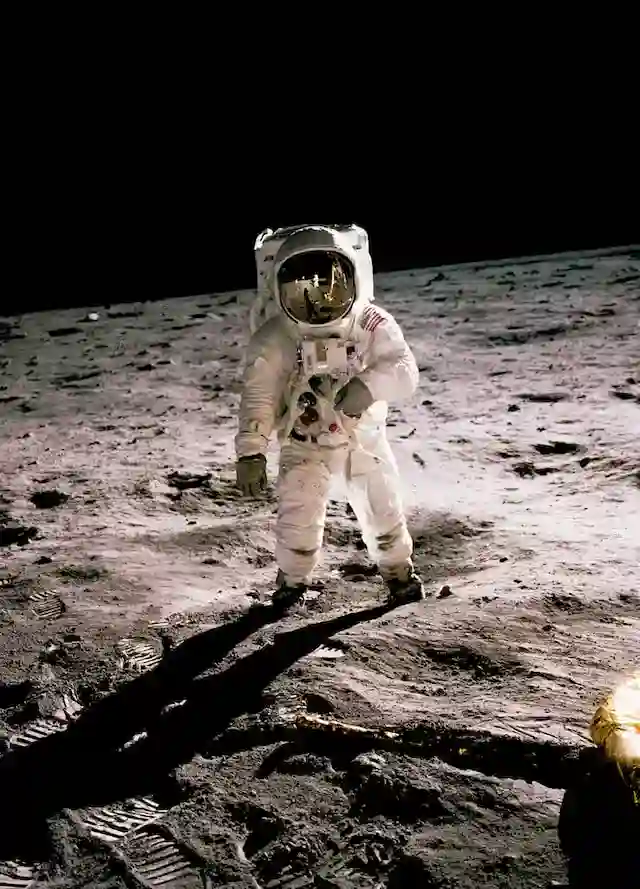
NASA has made significant contributions to scientific research through its various current NASA projects and current NASA missions.
-
ACS3: Advanced Composite Solar Sail System
NASA's ACS3 mission utilizes advanced composite materials in its lightweight booms and solar sail system deployed from a CubeSat. The objectives of this mission include demonstrating successful deployment, evaluating the effectiveness of the sail's design, characterizing thrust functionality, and collecting data for future system design.
-
BioSentinel
BioSentinel, selected as a secondary payload for NASA's Artemis I mission, focuses on measuring the impact of space radiation on living organisms beyond Low Earth Orbit (LEO). The objective is to develop a biosensor that can detect and quantify the biological effects of radiation in deep space, aiding in calibration and comparison to measurements conducted on Earth and the International Space Station (ISS).
-
CubeSat Laser Infrared CrosslinK (CLICK)
The CLICK mission aims to advance communication capabilities and relative distance measurements between small spacecraft. Comprising two sequential missions, CLICK A focuses on demonstrating the precision pointing performance of the fine steering mirror control system, while CLICK B/C aims to achieve full-duplex optical communication crosslinks between two 3U small spacecraft in low-Earth orbit.
-
CubeQuest
The Cube Quest competition offers a $5.5 million prize to teams capable of designing, building, and delivering flight-qualified small satellites capable of advanced operations near and beyond the moon. The competition consists of three stages: Ground Tournaments, Deep Space Derby, and Lunar Derby, encouraging innovations in small spacecraft propulsion and communications techniques.
-
Payload Accelerator for CubeSat Endeavors (PACE)
PACE aims to accelerate the development and readiness of small spacecraft technologies for deep space missions. The initiative focuses on maturing technology payloads, from proof-of-concept models to flight qualification, while shortening technology testing timelines. PACE seeks to expand the capabilities of small spacecraft for missions to new destinations in challenging environments at reduced costs.
-
Starling
The Starling mission utilizes four CubeSats in low-Earth orbit to test technologies enabling multipoint science data collection by small spacecraft swarms. It focuses on swarm maneuvering planning and execution, formation flight, communications networking, and autonomous coordination between spacecraft. These current NASA missions aim to determine the efficacy and limitations of these technologies for successful CubeSat swarm operations.
-
TechEdSat
The TechEdSat series of technology demonstrations engages college or university students in collaborative projects with NASA researchers. These projects evaluate new technologies for use in CubeSats and aim to bring small payloads back to Earth or the surface of Mars. TechEdSat contributes to the advancement of nano-sat technologies, offers STEM educational opportunities, and simplifies hardware and operations infrastructure for future spacecraft development.
A Look at the Latest Discoveries from Nasa's Interplanetary Missions
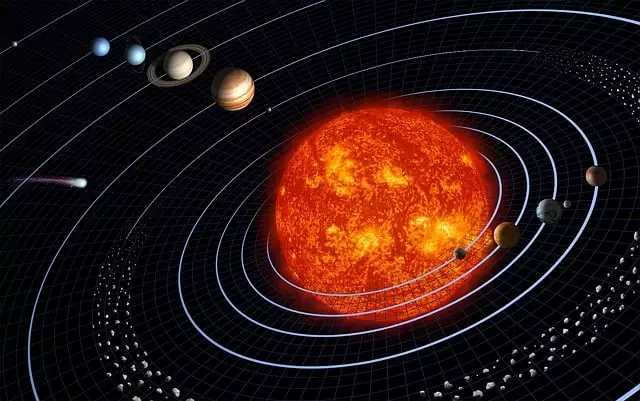
Here are some of the latest NASA discoveries in interplanetary missions:
-
Mars Perseverance Rover
The Mars Perseverance Rover, which landed on the Red Planet in February 2021, has made significant discoveries in the search for signs of ancient microbial life. One of its main objectives is to explore the Jezero Crater, which scientists believe was once a lake. The rover has already collected samples of Martian rock and soil, which will be returned to Earth for further analysis. The presence of organic molecules and the detection of ancient riverbeds indicate that Mars may have had conditions conducive to supporting life in the past.
-
Juno Mission
NASA's Juno spacecraft has been orbiting Jupiter since 2016, providing scientists with unprecedented data about the largest planet in our solar system. This mission has revealed intricate details about Jupiter's atmosphere, including its powerful storms and swirling cloud formations. Juno's measurements have helped scientists understand the planet's magnetic field, auroras, and its deep interior. These findings are enhancing our knowledge of planetary formation and the dynamics of gas giants.
-
Close Encounter with Pluto
In 2015, NASA's New Horizons spacecraft flew by Pluto, offering the first up-close images and data of this distant dwarf planet. This NASA mission revealed a geologically active world with mountains, valleys, and a thin atmosphere. Surprising discoveries included icy mountains taller than the Himalayas and evidence of a subsurface ocean. New Horizons' observations also provided insights into the composition and history of Pluto's moons, such as Charon and Nix. This space exploration mission expanded our understanding of the outer reaches of our solar system.
-
Saturn and its Moons
The Cassini-Huygens mission, a collaboration between NASA, the European Space Agency (ESA), and the Italian Space Agency (ASI), explored the Saturn system from 2004 to 2017. The mission's findings included detailed images and data of Saturn's rings, revealing their complex structure and dynamics. The Huygens probe, part of the mission, successfully landed on Saturn's largest moon, Titan, providing valuable insights into its unique atmosphere and hydrocarbon lakes. Cassini's observations also uncovered evidence of an ocean beneath the icy crust of Saturn's moon Enceladus, raising the possibility of habitable environments.
-
Voyager 1 and 2: Interstellar Space
Launched in 1977, NASA's Voyager 1 and Voyager 2 spacecraft are now exploring interstellar space, far beyond the boundaries of our solar system. These NASA deep space missions have provided unprecedented data about the outer planets, including Jupiter, Saturn, Uranus, and Neptune. Voyager 1 became the first human-made object to enter interstellar space in 2012, while Voyager 2 followed in 2018. The spacecraft continues to provide valuable information about the characteristics of the interstellar medium, magnetic fields, and cosmic rays, advancing our understanding of space beyond our sun's influence.
NASA Centers and Facilities
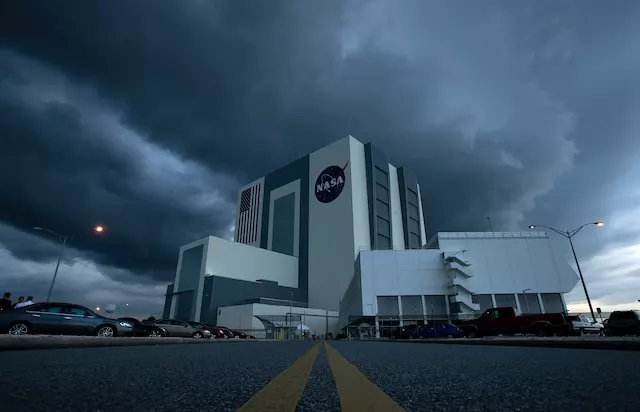
There are numerous NASA centers and facilities throughout the United States where Postdoctoral Fellows engage in research focused on various aspects of Earth, including climate, the sun, the solar system, and beyond.
Discover more about the NASA research centers and facilities where postdoctoral researchers collaborate with scientists and engineers to advance NASA's research, testing, and development of aeronautics, including electric propulsion and supersonic flight, as well as space technologies that contribute to future exploration and benefit life on Earth.
-
Ames Research Center
Since 1939, NASA's Ames Research Center has been at the forefront of conducting world-class research and development in aeronautics, exploration technology, and science aligned with the center's core capabilities. Ames is home to unique facilities and capabilities, including the world's largest wind tunnel, NASA's fastest supercomputers, NASA's sole arc jet facility for re-entry testing, and the world's largest motion-based flight simulator.
-
Armstrong Flight Research Center
The Armstrong Flight Research Center serves as NASA's primary center for high-risk atmospheric flight research and test projects. The center possesses the facilities and expertise necessary to conceive, design, analyze, fabricate, integrate, maintain, and conduct research and flight tests on modified or unique research vehicles and systems.
-
Glenn Research Center
The NASA Glenn Research Center focuses on designing and developing innovative technologies to advance NASA's missions in aeronautics and space exploration. Glenn's expertise is concentrated on the research and development of pioneering technologies for both aeronautics and space exploration. Its exceptional facilities enable NASA, government agencies, academic institutions, and industry partners to conduct specialized research and testing.
-
Goddard Space Flight Center
NASA's Goddard Space Flight Center plays a vital role in all aspects of the agency's missions, from development to de-orbit. Goddard supports various scientific disciplines, including Earth science, solar science, planetary studies, the sun-Earth environment, and astrophysics. It houses the renowned Hubble Space Telescope, conducts lunar surveys with LRO, and observes the Sun through the Solar Dynamics Observatory and Parker Solar Probe.
-
Goddard Institute for Space Studies
The NASA Goddard Institute for Space Studies (GISS) conducts research emphasizing a comprehensive study of global change, addressing natural and man-made environmental changes occurring on different timescales that impact the habitability of our planet. GISS operates as a laboratory within NASA's Goddard Space Flight Center, affiliated with the Columbia Earth Institute and School of Engineering and Applied Science.
-
Kennedy Space Center
The John F. Kennedy Space Center has been NASA's primary launch site for human spaceflight. It has facilitated the launch operations for the Apollo, Skylab, and Space Shuttle programs from the east coast of Florida. Additionally, the center manages the launch of robotic missions and commercial crew missions, as well as conducts research on food production.
-
NASA Headquarters
Located in Washington, D.C., NASA Headquarters provides overall guidance and direction to the agency. While the day-to-day work is conducted in laboratories, airfields, wind tunnels, and control rooms at the ten field centers and various installations across the country, NASA Headquarters serves as the central coordinating entity. A diverse group of scientists, engineers, managers, and support personnel share the vision, mission, and values of NASA. The headquarters is organized into five mission directorates: Aeronautics, Human Exploration and Operations, Science, Space Technology, and Mission Support.
-
Solar System Exploration Research Virtual Institute (SSERVI)
The Solar System Exploration Research Virtual Institute (SSERVI) was established by NASA to address fundamental scientific questions related to the Moon, Near Earth Asteroids, the Martian moons Phobos and Deimos, and the surrounding space environments. As a virtual institute, SSERVI funds investigators at various domestic institutions, fostering collaboration with international partners through virtual technology to facilitate new scientific endeavors.
-
Wallops Flight Facility
The Wallops Flight Facility, part of NASA's Goddard Space Flight Center, serves as the agency's primary location for conducting research using suborbital vehicles such as aircraft, scientific balloons, and sounding rockets. As the only rocket launch range under NASA's purview, Wallops has successfully launched over 16,000 rockets carrying aircraft models, space and earth science experiments, technology development payloads, and satellites. Through partnerships with academia, industry, and other government facilities, Wallops serves as a test site for the development of unmanned aerial vehicles for use in the national airspace system.
Space Center Houston
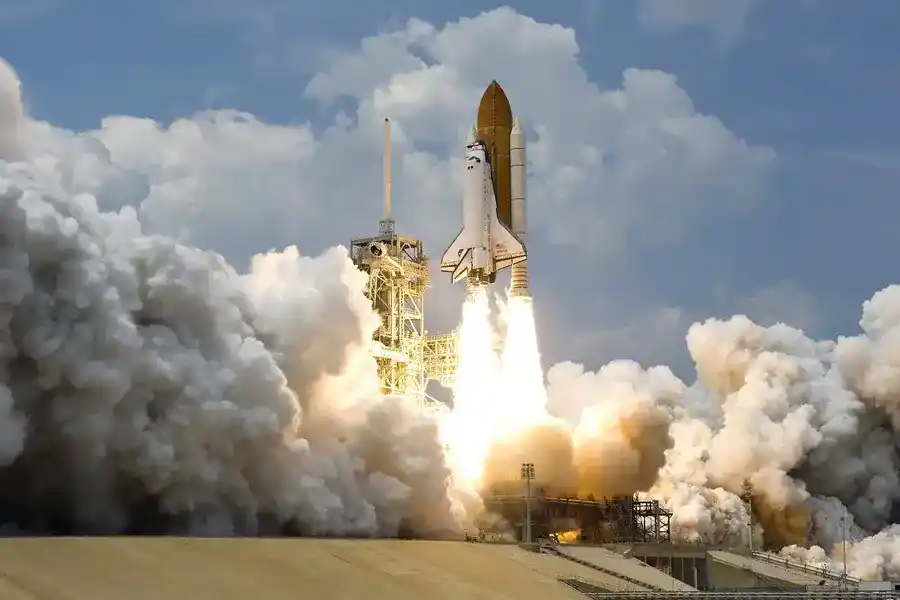
Space Center Houston, the official visitor center of NASA Johnson Space Center, holds the distinction of being Houston's top attraction for international visitors and the first Smithsonian Affiliate in the greater Houston area.
Immerse yourself in the fascinating history and promising future of America's human spaceflight program while surrounded by an extensive collection of space artifacts, making it the largest in the southeastern United States. There's always something new and captivating to explore. With over 400 space artifacts, including actual flown spacecraft and the most extensive public display of moon rocks, as well as multiple major seasonal exhibits throughout the year, this NASA Space Center offers a wide range of thrilling attractions for visitors of all ages.
During your visit to Houston space center, be sure to embark on an exhilarating journey to the red planet through our latest exhibit, Mission Mars. Experience a virtual Martian sunset, climb into a simulated Orion capsule, and feel the textured rock cliffs inspired by the red planet in the interactive display. Discover the challenges involved in traveling to Mars, the technological hardware required for such missions, and the potential for human colonization on the fourth planet in our solar system within the next few decades.
One of the must-see landmarks is Independence Plaza, proudly presented by Boeing. This internationally recognized site showcases a shuttle replica mounted on a shuttle carrier aircraft, providing a unique opportunity for visitors to enter both vehicles. Spanning eight stories and featuring multiple exhibits, Independence Plaza offers a rare glimpse into the historic shuttle era, highlighting the breakthroughs and technological advancements made by NASA through the Space Shuttle Program, which continue to influence future space exploration.
No visit is complete without experiencing Space Center Houston's most popular attraction, the NASA Tram Tour. This exclusive opportunity grants you access to the NASA Johnson Space Center, offering a behind-the-scenes look at human space exploration. Explore Rocket Park, home to one of the remaining three actual Saturn V rockets on display. Step into Historic Mission Control, the nerve center from which NASA led the iconic Gemini and Apollo missions, including the momentous first lunar landing. Discover the Space Vehicle Mockup Facility, where NASA astronauts train and where scientists are developing the next generation of space exploration vehicles.
As a nonprofit organization, NASA Space Center Houston attracts over 200,000 teachers and students from around the world each year, providing exceptional educational opportunities. Students can engage in hands-on, immersive activities such as training underwater like astronauts and delving into space science through year-round educational programs like Space Center University.
Plan your visit today to Space Center Houston, where the wonders of space come to life and inspire the dreamers and explorers of tomorrow.
NASA Missions
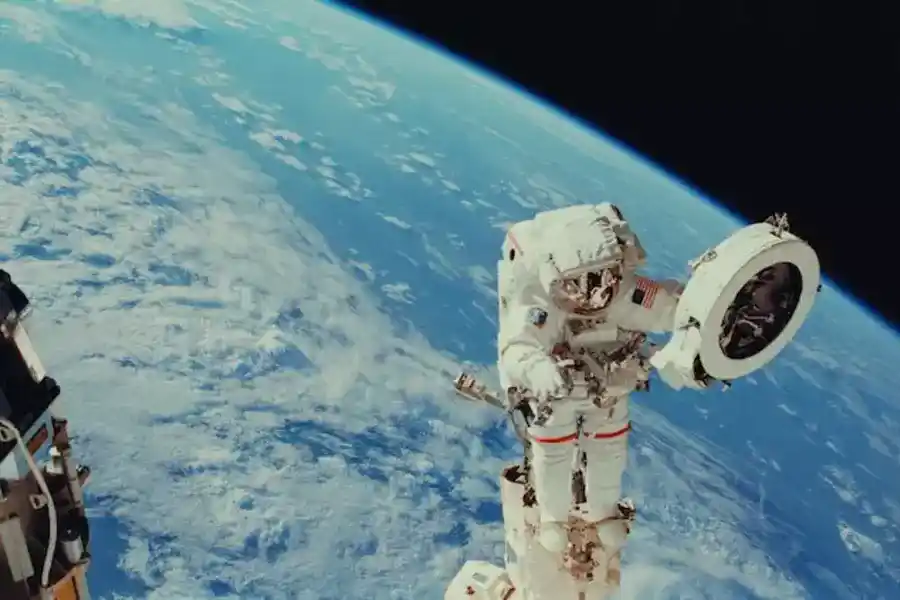
The following is the upcoming NASA missions list:
-
NASA Future Missions
Near-Earth Object Surveyor The Near-Earth Object Surveyor is an infrared space telescope specifically designed to advance NASA's efforts in planetary defense. Its primary objective is to detect and track near-Earth objects that could potentially pose a threat.
-
The Farside Seismic Suite
The Farside Seismic Suite aims to deploy two highly sensitive seismometers, originally built for the Insight Mars mission, on the far side of the Moon. This groundbreaking mission will enable the measurement of far-side moonquakes and meteor impacts for the first time ever.
-
ASTHROS
ASTHROS (Astrophysics Stratospheric Telescope for High Spectral Resolution Observations at Submillimeter-wavelengths) is a high-altitude balloon mission dedicated to studying astrophysical phenomena. It will provide valuable insights into various celestial objects and phenomena.
-
Europa Clipper
The Europa Clipper mission focuses on detailed reconnaissance of Jupiter's moon Europa. Its primary objective is to investigate the moon's potential habitability and the presence of conditions suitable for life beneath its icy surface.
-
SunRISE
The Sun Radio Interferometer Space Experiment (SunRISE) consists of an array of six small CubeSats, working together to study solar activity and phenomena related to the Sun.
-
Deep Space Optical Communications (DSOC)
The Deep Space Optical Communications experiment aims to demonstrate high-bandwidth communications in deep space for the first time. This technology will significantly enhance data transmission capabilities over long distances.
-
Psyche
The Psyche mission involves a journey to unique asteroid rich in metals, orbiting the Sun between Mars and Jupiter. By studying this asteroid, scientists hope to gain valuable insights into the early formation of the solar system.
Read more: Fun & Top Things to Do in Houston, Texas
Let’s Sum Up
In conclusion, NASA stands as a beacon of human achievement and exploration in the realm of space. From its humble beginnings to its current groundbreaking missions, NASA has pushed the boundaries of scientific knowledge and expanded our understanding of the universe. This complete guide has provided a glimpse into the agency's rich history, iconic spacecraft, pioneering astronauts, and exciting future missions.
Whether it's the awe-inspiring images captured by telescopes and rovers, the groundbreaking discoveries made on distant planets, or the ongoing efforts to protect our planet and explore new frontiers, NASA continues to inspire generations with its passion for exploration and commitment to pushing the limits of human ingenuity. As we look to the future, we eagerly anticipate the next chapter in NASA's story, knowing that it will continue to captivate our imaginations and expand the horizons of what we thought possible
If you're looking for luxury transportation to NASA, consider Lavish Ride services, which provide the best luxury transportation in the world.
Lavish Ride offers the most luxurious, premium, and comfortable black car service In Houston. It is your reliable best private chauffeur services.